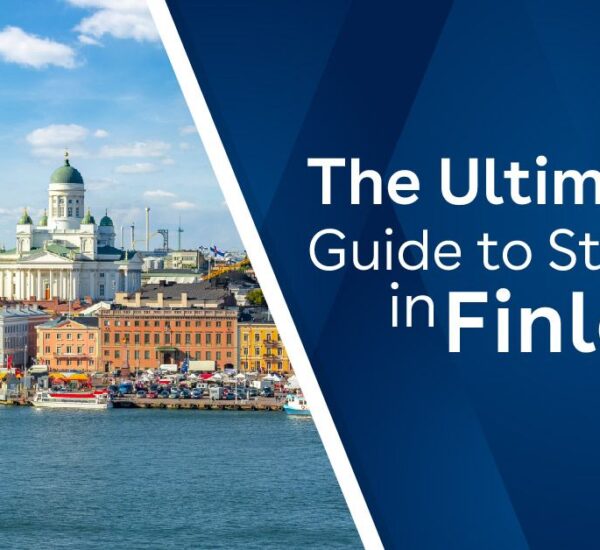Congratulations on receiving your university acceptance letters! But before you pack your bags, there’s one critical hurdle left: navigating the study abroad visa interview process. While it may feel daunting, understanding what consular officers look for and how to respond can greatly improve your chances of success. And if your visa gets rejected, all is not lost—you can learn from the experience, strengthen your profile, and reapply confidently.
we’ll cover:
- Visa Interview Process: What to expect
- Key Evaluation Factors: Finances, academics, and ties
- Common Interview Questions & Tips
- Essential Documents: Avoiding discrepancies
- Dress & Demeanor: Making a strong first impression
- What If My Visa Gets Rejected?
- Appeal vs. Reapplication: Which route to choose
- Strengthening Your Profile: Between applications
- Alternative Study Destinations: Broaden your horizons
- Staying Positive & Next Steps
1. Visa Interview Process: What to Expect
The visa interview is a 10–15 minute conversation with a consular officer, typically held at your country’s embassy or consulate. Its main goals:
Verify your identity and genuine intent to study
Confirm your ability to fund your education
Ensure your chosen program is academically appropriate
Assess your post-study plans and ties to home
Typical Interview Format
Document Submission: The officer reviews your application package.
Question & Answer: You’ll be asked 5–10 targeted questions.
Decision: Often on the spot—approved, pending, or refused.
Pro Tip: Arrive 30 minutes early with neatly organized documents in a single folder to demonstrate professionalism.
2. Key Evaluation Factors
A. Financial Ability (Proof of Funds)
Consular officers need confidence that you can cover:
Tuition fees
Living expenses (housing, food, transport)
Return airfare (in some cases)
Acceptable evidence:
Bank statements with a stable balance for last 6 months
Scholarship award letters
Education loan sanction from a reputable bank
Affidavit of support if a family member sponsors you
B. Academic Credentials
Your transcripts, degree certificates, and acceptance letter must align:
Field relevance: Undergraduate → Bachelor’s program; Master’s → Master’s
Grades: Minimum GPA/percentage as required by university and visa rules
Standardized tests (if applicable): IELTS/TOEFL, SAT/ACT, GMAT/GRE
C. Program Relevance & Career Path
Officers look for a logical progression:
Your previous major matches your intended study
The program length and level make sense for your career goals
You can articulate “Why this program?” and “Why this university?”
D. Ties to Home Country
Demonstrate strong reasons to return after studies:
- Family commitments
- Property or business ownership
- Future job prospects in home country
3. Common Interview Questions & Tips
| Question | How to Answer |
|---|---|
| “Why did you choose this university?” | Highlight program strengths, research facilities, faculty expertise. |
| “How will you fund your studies?” | Provide exact figures, mention scholarship or loan details. |
| “What are your career plans post-graduation?” | Explain how degree aligns with your home country’s job market needs. |
| “Do you have family in [destination country]?” | Honest answer; if none, emphasize support network at home. |
| “Have you ever been refused a visa before?” | Disclose previous refusals; focus on changes you’ve made to strengthen application. |
Interview Tips
Be concise: Keep answers to 1–2 sentences.
Maintain eye contact: Shows confidence and honesty.
Speak clearly: Avoid slang or overly complex vocabulary.
Stay calm: Slow your pace; take a breath if needed.
Listen carefully: Don’t interrupt the officer’s question.
4. Essential Documents: Avoiding Discrepancies
Ensure all documents are accurate, legible, and consistent:
Passport: Valid ≥ 6 months after intended return date.
Acceptance Letter: Includes course name, start/end dates, tuition fees.
Academic Transcripts & Certificates: Original + certified English translations.
Proof of Funds: Bank statements, scholarship letters, loan approvals.
Passport-size photos: Recent, white background, as per embassy specs.
Cover Letter (if required): Concise study plan and funding outline.
Additional: Résumé/CV, proof of accommodation booking, travel itinerary.
Common Pitfall: Name mismatches—make sure your name is identical across all documents.
5. Dress & Demeanor: Making a Strong First Impression
Dress Code: Business casual at a minimum—slacks and collared shirt for men; blouse with skirt/slacks or a modest dress for women.
Grooming: Neat hair, minimal jewelry, light makeup.
Body Language: Sit up straight, nod politely, smile when appropriate.
Confidence: Firm handshake, direct eye contact, measured tone.
6. What If My Visa Gets Rejected?
A visa rejection is disappointing but not the end. Common reasons include:
- Insufficient funds proof
- Unclear study plan
- Document discrepancies
- High demand/quota limits
Steps After Rejection
Read the Refusal Letter: It outlines the exact reason for denial.
Request Clarification: Politely contact the embassy for elaboration.
Appeal vs. Reapply: Some countries allow an administrative review; others require reapplication.
Fix Deficiencies: Add missing documents, clarify finances, or strengthen your study plan.
Reapply: Submit a fresh application with all corrections and a cover letter explaining improvements.
7. Appeal vs. Reapplication: Which Route to Choose?
| Option | When to Use | Pros & Cons |
|---|---|---|
| Appeal | If refusal cites a clarifiable error in processing. | + Faster – May require legal help; success not guaranteed |
| Reapply | If there are substantive deficiencies (funds, docs). | + Complete overhaul – Pays full fee again; longer timeline |
Pro Tip: If timeframe allows, rectify issues and reapply for a cleaner, stronger case rather than engaging in a drawn-out appeal.
8. Strengthening Your Profile: Between Applications
Boost your chances by enhancing your academic and professional credentials:
Additional Coursework: Online certificate (Coursera, edX) in your field.
Work Experience: Relevant internships or part-time roles.
Volunteer Work: Demonstrates community engagement and maturity.
Language Proficiency: Higher IELTS/TOEFL score than minimum.
Personal Statement: Refine and tailor to embassy concerns.
Financial Planning: Secure a larger margin of funds or scholarship.
9. Alternative Study Destinations: Broaden Your Horizons
If repeated refusals occur, consider these study abroad options with simpler visa regimes:
Canada: Streamlined Student Direct Stream (SDS) for fast-track visas.
Australia: Clear subclass 500 student visa, robust post-study work rights.
New Zealand: Generous work rights and pathway to residency.
Germany: No tuition at public universities; free or low-cost living.
Ireland: Easy Stamp 2 student visa with 20-hour work allowances.
10. Staying Positive & Next Steps
A visa refusal can feel like a major setback, but remember:
- Many successful applicants have faced initial refusals.
- Persistence and professionalism pay off.
- Use downtime to enhance your profile and sharpen your study plan.
Next Steps Checklist
Analyze rejection reasons carefully
Contact embassy/consulate for clarifications
Improve proof of funds and study plan
Gather any missing/corrected documents
Reapply (or appeal) with renewed confidence
Final Thought: Don’t let a single visa interview or rejection derail your dreams of an international education. With the right preparation—strong financial documentation, a coherent academic trajectory, and polished interview skills—you’ll stand out to consular officers and secure your study abroad visa.
Good luck on your journey! If you have any questions about the visa interview process, appeals, or alternative study options, leave a comment below—we’re here to help.


